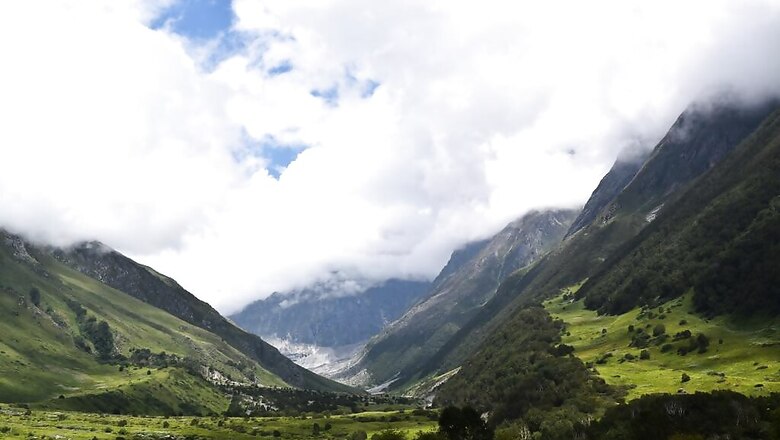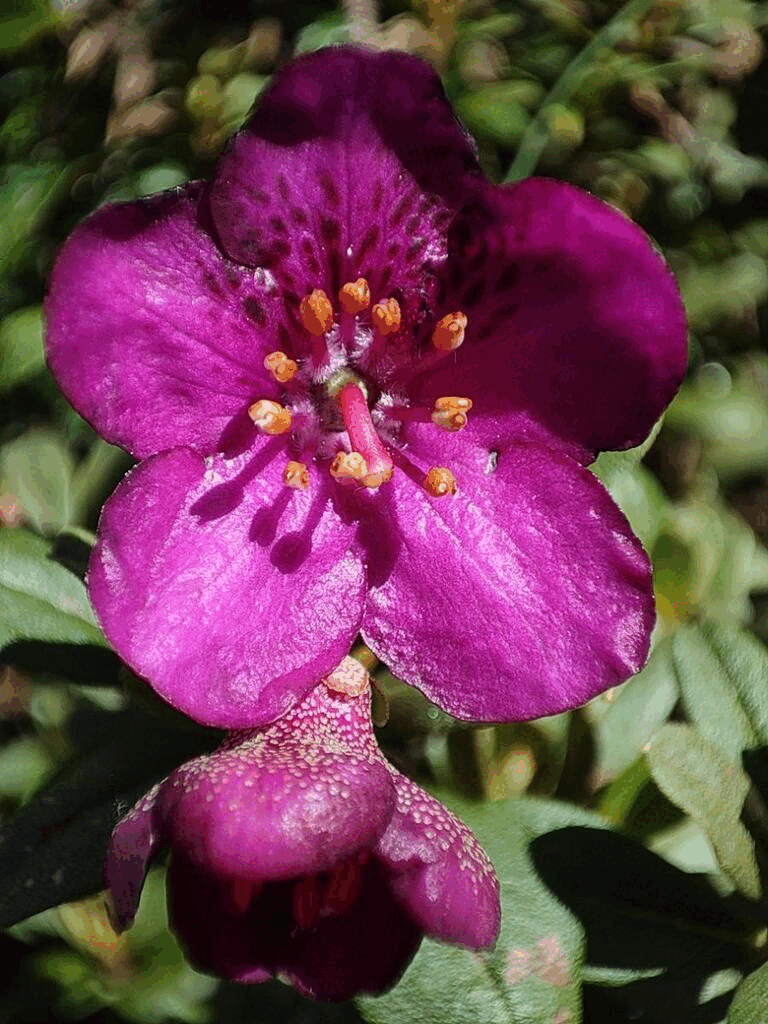
views
Uttarakhand’s Valley of Flowers National Park is a popular destination especially for trekkers who want to experience the beauty of the Himalayan ranges for the first time. That is why the trek to the valley is also called the “Beginner’s Trek”.
The Valley of Flowers National Park, which covers an area of 87 square kilometres in the Chamoli district, is a UNESCO World Heritage Site and one of the two core zones of the Nanda Devi Biosphere Reserve.
However, the description on some websites and the pictures of the valley on Google may look like “heavenly” and some sort of “floral fairy-tale”. But, in reality, it may not be dreamy as it is claimed.

The Beauty and The Beast?
Situated at an altitude of around 11,500 feet above sea level, the Valley of Flowers is believed to be discovered in 1931 by British mountaineers who lost their way and accidentally ended up being in the valley.
The journey begins from a town called Poolna. Trekkers have to cover 13-15 kilometres to reach a small village encircled by mountains known as Ghangaria, following a well-defined trail that passes through the lush green forest alongside the Lakshman Ganga River.
At Ghangaria, there are small hotels without air-conditioned rooms and none of these have ceiling fans because of the comfortable to extremely low temperature.
However, from Ghangaria, trekkers have to cover almost 4 km of distance, following the narrow trail to reach the Valley of Flowers, enjoying the stream that flows all the way through the valley.
It is noteworthy that in Ramayana, Hanuman is said to have brought the magical herb that was used to resuscitate Lakshman from this valley.
According to the Uttarakhand Tourism website, the variety of exotic flowers (over 600 species) such as orchids, poppies, primulas, marigold, saxifrages, sedums, lilies and daisies can be seen between the months of May and October, though the maximum abundance of flowers can be found from July to September.
When asked about the perfect time to witness the breath-taking beauty of the full-bloomed valley, a young trek guide said it doesn’t matter when the trekkers are planning to visit the valley, such beauty cannot be seen anymore.
He said: “Before people reach Valley of Flowers, they are told that they should not pluck or touch any flower and most importantly they are not supposed to leave the designated trail. But hardly anyone keeps these instructions in mind.”
According to him, such insensitive actions by the trekkers are affecting the germination process and causing a decline in the flower varieties in the valley.
“Earlier this year, when I visited Valley of Flowers with a trekking team, I noticed some varieties which were at their early stage of growth. But these are neither growing at the supposed speed nor can be seen as a majority out there due to continuous human interference,” the trek guide added.
While explaining further, he also talked about how the natural inhabitants are also being affected by these issues.
So, he believes that if the government closes the national park for at least 3-4 years it may help the overall valley and provide enough time for different types of flowers to grow.

The Scientific Fact
News18 spoke to environmentalist Maharaj K. Pandit, Professor at the Department of Environmental Studies, University of Delhi, to understand the scientific reason behind the decline of flowers in the valley.
He said: “For any change to be scientifically monitored it cannot be based on anecdotal evidence. Besides, what is the baseline of flora and fauna from where it has declined. About three decades back similar voices were heard that invasive species have overtaken the Valley.”
Prof Pandit said there were equivocal explanations for why such a change had occurred, primarily in plant species, and there was no documentation of faunal change in this or that way.
“I am rather amused how Google images can show floral blooms in the Valley of Flowers,” he added.
Prof Pandit then said: “The floral dynamics, in particular over the last half a century is the result of rapidly changing climate as a result of which more shrubby species are invading in an otherwise herbaceous alpine meadow.”
“Our studies have clearly shown intrusion of shrublands into the Himalayan meadows as a result of which the floral transformation may have occurred,” he noted.
When asked whether the suggestion given by the trek guide about closing the valley for a few years would help, Prof Pandit said given the impact of changing climate, “how can regulating human visitations or closing it for the public could help?”
Rather, he suggested more regulatory mechanisms and penalties in case violations take place.
Technology’s Role
From health to space, technological advancements have played a major role in terms of finding solutions to previously unsolved issues. News18 asked the environment expert whether technology can help the valley bring its mesmerizing beauty back.
Prof Pandit said: “Technology can surely help monitor the progression of shrub intrusion into the meadows. The use of drones is a good tool to monitor land use changes or monitor various biotic pressures. Beyond that, I can’t see what else technology is supposed to deliver.”
News18 reached out to drone manufacturing leaders in India to find out whether such unmanned aerial vehicles (UAVs) can help to restore the beauty of the valley and how.
Agnishwar Jayaprakash, Founder and CEO of Garuda Aerospace, which is one of the beneficiaries of the PLI scheme for drones, said: “The idea is excellent and Garuda Aerospace has been pioneers in the precision agriculture Kisan Drones that have been deployed across the country to monitor & analyse the ecological impact in our environment.”
It should be noted that Garuda Aerospace has completed the mapping and digitisation of land records of over 7,000 villages of Uttar Pradesh under the Centre’s Svamitva scheme.
However, Jayaprakash said: “Garuda Aerospace has now commenced processing the data while also exploring embedding AI &; ML features which will not only help in monitoring but will support scientists, biological experts and government officials make informed decisions to preserve ecological balance in the environment.”
Meanwhile, Vishal Saurav, CEO and Founder of VFLYX India, one of the top players in the UAV industry said the use of Drone-Based Data Acquisition, which involves multiple flights over the vegetation for observation and data analysis, can accomplish two primary goals.
According to him, the first is “using a photogrammetry process chain, the entire area can be mapped in ortho-mosaics, providing a birds-eye perspective of the terrain and giving an in-depth understanding of the vegetation and plant’s health in detail.”
“Secondly, a high-end drone equipped with a high-resolution camera and image-processing software like PIX4d make this possible to calculate both the plant population and density in a particular region,” Saurav noted.
Read all the Latest News India and Breaking News here




















Comments
0 comment